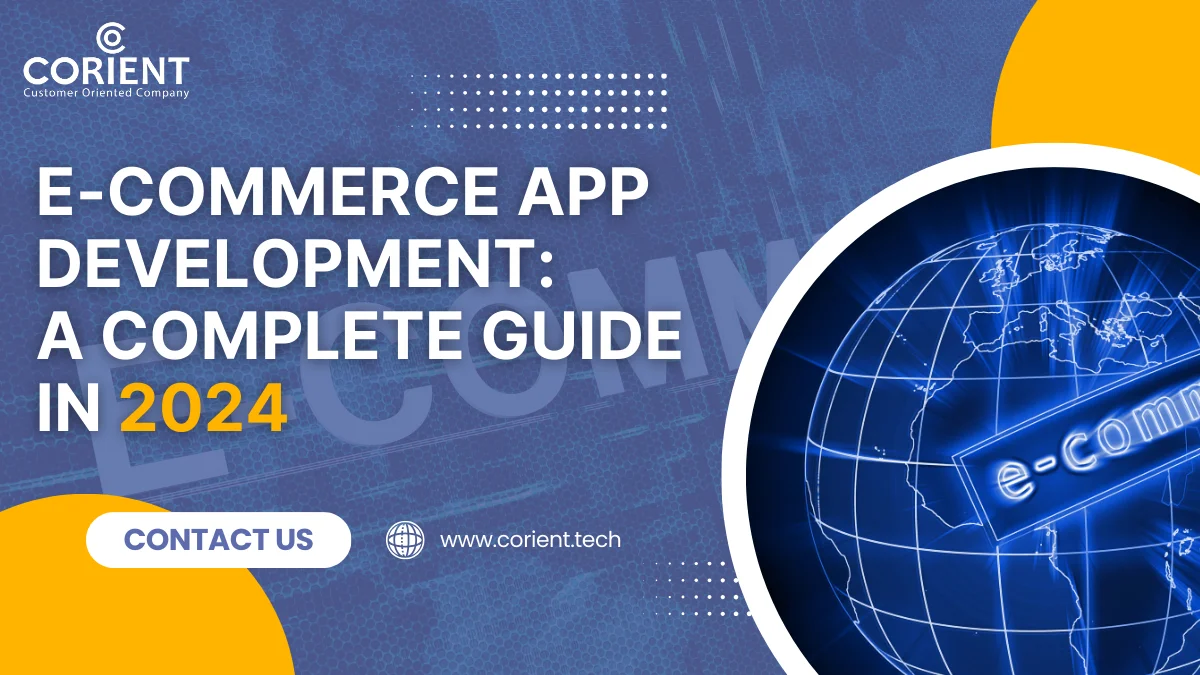The universal connectivity provided by mobile internet service providers is the most frequent touchpoint that easily unites nearly everyone in today’s world, including businesses and consumers. Digitalisation has made our lives modern and 24/7 connected to the virtual world. Due to mobile phones, it is easier to buy things online you need at any time of the day.
That’s why many businesses are now moving towards developing applications for their business. Businesses of every kind can attract a sizable clientele for their enterprise by creating eCommerce solutions for mobile platforms. Although, this guide will help you implement an eCommerce solution for mobile-focused customers in your organisation. In this blog article, we will describe what an eCommerce mobile app is, along with other essential details about eCommerce mobile app development.
An eCommerce app development company can create a mobile commerce application, a software program allowing people to shop directly from a business and interact with it via mobile devices. Basically, mobile applications provide an extra sales channel for companies looking to target clients who prefer to shop on their smartphones or tablets as the two most popular mobile platforms worldwide, Android and iOS, mobile e-commerce applications can be designed for each of these operating systems.
As said earlier, everyone is moving towards developing a mobile application for their businesses. So, the e-commerce industry is increasing, and its high time to create a mobile application for your business if you don’t have one. There are various advantages your company can get if you have an e-commerce mobile app. Let’s know the benefits in detail:
Improves purchase process:
Mobile app demand is growing because customers find it more convenient to use mobile applications than e-commerce websites. eCommerce mobile applications are significantly superior when considering all aspects of the purchasing experience, from product discovery to comparison shopping with other products of comparable quality or functionality to making the ultimate purchase. You can allow the user to interact and continue purchasing where he left off by utilising the push notification and other platform-specific features.Allows direct communication with customers:
Customers are an asset for any business. If customers are satisfied, the business can survive in the market and grow more over the years. As you have contact data for each customer, you can use the mobile application to provide discounts on certain item purchases or give special offers on birthdays and anniversaries. Through mobile apps, you can keep customers engaged with your services and retain them for a longer period.Types of e-Commerce apps:
Smartphones have increased the demand for m-commerce apps it has given businesses another opportunity to generate income. The apps used to support the operations differ according to the numerous business models. But the apps are distinguished by their features and functionalities, and they were created to achieve specific corporate goals and targets. Basically, there are four categories of e-commerce mobile applications. Based on this, you have to decide which business belongs to which category and develop the app accordingly.
Business to Business (B2B):
Applications in this category can facilitate commercial transactions through their interface. Mobile channels enable the exchange of goods and services, facilitating large-scale transactions involving substantial quantities of trade. Retailers then sell to consumers. Examples of such businesses are Amazon Business and Alibaba. Therefore, the goods supplied here may be used as raw or finished goods in later sectors.Business to Consumer (B2C):
Applications created to support a business-to-consumer (B2C) model will ultimately benefit both the product’s final user and the company. Sales take place directly through the application channel. Examples of these e-commerce apps are Flipkart, Myntra, and Domino. These applications give customers immediate access to every product a business sells, whereas merchants may restrict the number of products and variety they carry when working with numerous companies.Consumer to Business (C2B):
Consumer to business is a commerce model opposite to the B2C model. In this model, a consumer sells a product or service to the industry. Companies suggest expanding the practice of sharing valuable talent through these channels and creating distinctive characteristics on top of such purchases.Consumer to Consumer (C2C):
Applications that use the business model to enable the exchange of goods and services between customers are known as consumer-to-consumer or customer-to-consumer applications. Customers buy things from other customers on C2C, which frequently functions as a third-party platform.Steps to develop an e-Commerce app from scratch:
But developing an app from scratch involves several steps. Before directly going for e-commerce mobile app development, you need to understand your app requirements. As a result, this will make it easier to convey your requirements to the app development company.
Conduct competitor analysis:
Conduct rigorous market research to understand your target audience, their tastes, and purchase behavior.Also, you need to examine rival m-commerce apps to find areas of strength, weakness, and potential unique selling points.
Plan UI/UX requirement:
Create wireframes or mock-ups to see the app’s layout, functionality, and screen designs. The eCommerce app design should have a user-friendly and visually appealing interface that corresponds with your company identity and provides a seamless buying experience.Front-end development:
When developing a mobile app, pick a suitable technology stack (cross-platform or native). Construct the application’s front-end, which includes the displays, user interface, and navigation.Finally, ensure a seamless and intuitive user experience across the app requires the implementation of the designed UI/UX.
Back-end development:
Install servers, databases, and APIs to support your m-Commerce application.Create the server-side components needed to manage user authentication, process orders, manage product data, and perform other business logic. Further, implement APIs to provide smooth communication between the app and back-end services.
App testing:
Conduct thorough app testing to ensure it is free from bugs and errors; otherwise, it hinders app functionality. To gain insights and make changes, conduct user testing or beta testing sessions to obtain feedback from users. Iterate and improve the app in response to user input to ensure it offers a top-notch user experience.
Deploy and launch:
Prepare the required configurations and assets to submit to app stores (such as the Google Play Store and the Apple App Store). To submit and get approved for your app, follow the rules and specifications set out by the individual app stores. Users can now download and utilise the eCommerce app by launching it on the app stores.Firstly remember, the steps mentioned above may change and differ based on your requirements for the app.
Conclusion:
eCommerce companies are advancing their customer-centric innovations to the point where they enter people’s daily lives. Enhancing responsiveness and customer interaction through the integration of intelligent features has improved the overall online purchasing experience. As a result, e-commerce app development has accelerated dramatically to meet customer expectations and requests. Customers are setting standards for e-commerce app developers because they want to have an in-store experience from the comfort of their homes.Corient Tech, a sister company of Corient Business Solutions, can assist you in developing an e-commerce mobile app based on your requirements. Connect with us to bring your e-commerce app vision to reality.

